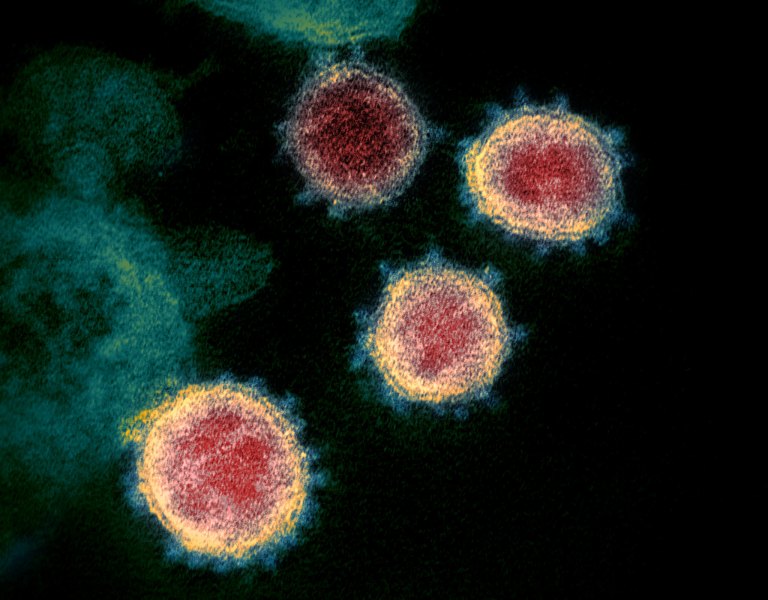6 Things You Absolutely Should Know About Herpes
Have you ever had a moment like this? “No. Way. I do not want an STD. Please don’t let this be an STD. I'm not one of those people who gets something like that. What will my partner think? Will anyone want to be with me again?”
Have you ever had a moment like this? “No. Way. I do not want an STD. Please don’t let this be an STD. I’m not one of those people who gets something like that. What will my partner think? Will anyone want to be with me again?”
If you’re like most people, you either don’t want to even consider the possibility that you could get a sexually transmitted disease, or you’ve probably been exposed to one: Herpes. Here are some things you might not know about Herpes and cold sores.
1. Is Herpes Common?
Herpes type 1 and 2 are common viruses that affect a surprisingly large portion of the population. Up to 90 percent of us have been exposed to the herpes simplex virus at one time or another. These little buggers are transmitted by direct contact with open sores or with fluids from the mouth (type 1) or genital area (type 2).
2. Transmission Of Herpes Or Cold Sores
Transmission (actually contracting the disease) is most likely when the other person has active lesions. However, it can occur without symptoms as well, meaning you can get it from someone even if they aren’t having an outbreak. Once you’re infected, the virus inserts its actual DNA into your DNA, in the nerve ganglia, innervating a particular area of your skin. Then, upon certain stresses or trigger events, the outbreak occurs in that area.
3. Trigger Events Can Include:
- Getting a cold, a fever or other viral infection; hence the name “fever blisters” and “cold sores”
- Emotional stress
- Bodily injury
- Taking medications, drugs or other substances
- All sorts of other stresses to the system
These triggers typically occur a few days before the appearance of an outbreak, although that time may vary according to the severity of the stress. It’s almost as if the virus is content to quietly live inside you indefinitely, but if it thinks the ship (you) is injured and about to sink, it wants to jump ship and spread itself onto another human ship.
4. Appearance Of Herpes Or Cold Sores
Typically, herpes appears as a group of tiny blisters with such thin walls that they burst in a day or so leaving a group of 1-2 millimeter ulcers. There is often an itching or burning sensation just before and after they appear.
- Type 1: Oral Herpes (Cold Sores): These are the typical cold sores that appear on or around the lip or mouth. They can come from any kind of kissing — even just a tiny peck on the cheek from Aunt Millie who happens to have an open sore around her mouth. Backing away from anyone with such a sore with a quick excuse before the kiss can do a lot to prevent these sores. So can not sharing drinks or toothbrushes.
- Type 2: Genital Herpes: Many people develop genital herpes as the result of multiplesex partners or the wrong partner at the wrong time. Condoms are helpful in preventing this transmission, as well as knowing your partner, examining the contact areas, washing and using anti-viral lubricants. Knowing your partner means being intimateenough to ask if they have had herpes, if they suspect a current outbreak, and getting an honest answer.
5. What To Do If You Already Have It
If you already have herpes, you can often tell when an outbreak is about to begin by itching, pain and even redness in the area. This is the time when you still have a chance to stop it. The anti-herpes drugs like Acyclovir, which you can get with a prescription from your physician, are most effective.
6. What Is Lysine And Does It Work?
Lysine is an amino acid that appears to inhibit the virus, according to a number of studies and population studies. The medical literature has gone back and forth between studies that show the benefit of lysine and those that show it doesn’t work.
It appears that an amino acid called arginine stimulates the growth of the herpes virus and competes with lysine. Arginine is an amino acid that’s abundant in grains, nuts and chocolate. So, people who eat a lot of those foods sometimes have a problem with more frequent herpes outbreaks.
Taking extra lysine, especially after eating a lot of high-arginine foods, helps some of those people avoid outbreaks. I have definitely seen this with patients in my practice. The amount of lysine needed varies from 500 mg/ day to 1000 mg 3 times per day, or even more.
It’s important to identify the events and exposures that precede your outbreaks that may act as triggers, and begin to remedy them or get help in doing so. It’s important to have a skilled practitioner work with you to help you identify and remedy your triggers. ![]()






